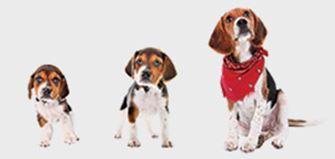Breed Spotlight: the Rottweiler
The Rottweiler is a breed of antiquity with roots that go back to the ancient Roman army dogs. Long before the MRE (Meal, Ready-to-Eat) or refrigeration, large armies would bring along their own living food sources to feed the hungry soldiers while on an excursion. Large, durable Mastiff-type dogs were employed to drive, herd, and protect the livestock. As the armies continued and the food source would dwindle, the dogs would be left behind. As the empire fanned out, they covered much of Europe. Around A.D. 74, the main passage over the Alps was Gotthard’s Pass, which leads into modern-day southern Germany. Due to this likely route, it is believed that these dogs also influenced many Swiss mountain breeds, such as the Swiss mountain and cattle dogs. Once over the Alps, the armies infiltrated the German town of Rottweil. There, many of these dogs were left and utilized by the Roman army as well as locals for the next 200 years. The town of Rottweil became known as the European cattle epicenter, and remained so over the next 1800 years. There, the large dogs assisted cattle herdsmen and butchers and became known as the Rottweil Metzgerhunds, or “butcher’s dogs.” They were employed to guard, herd, and drive cattle, as well as pull carts of meat and milk to market.
Despite his service and utility, it wasn’t until 1914 that the first Rottweiler club, the Deutscher Rottweiler Klub (DRK) was established. In 1921, the Allgemeiner Deutscher Rottweiler Klub (ADRK) was formed from several other organizations. Today, the ADRK is recognized as the officiating club of the German Rottweiler breed.
The Rottweiler dog has become an international favorite. His popularity peaked in the mid-1990s, and the breed remains one of the most popular and easily recognized dog breeds today. The modern Rottweilers are still used as guard dogs, but they are also used as police and therapy dogs. Today, the breed is renowned across the world for its intelligence and trainability.
Want to learn more about the Rottweiler? Click here for the full breed standard.

















